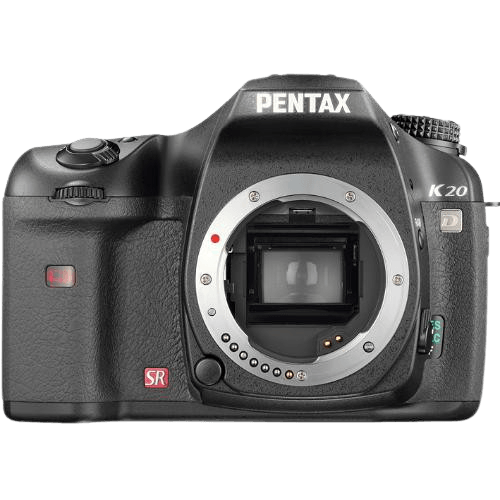Pentax K20D Specs and Scores

The Pentax K20D receives a score of 47/100 for its general specifications. Launched in 2008 with a price of $770, this DSLR camera measures 142 x 101 x 70mm and weighs 1.76 lbs (800g). Compared to today’s market, the K20D’s specifications may seem outdated, especially considering its age and weight. Nevertheless, this camera still holds a respectable place among DSLR enthusiasts who appreciate its sturdy build and reliable performance.
Pentax K20D Overview and Optics
The Pentax K20D optics score is 49 out of 100. This camera features a 14.6-megapixel CMOS sensor, which is an APS-C size. The shooting speed of 3 frames per second is lower than many modern cameras. However, the camera’s Prime processor ensures efficient image processing.
The Pentax K20D has a DXOMARK sensor score of 65, which is respectable but not outstanding in today’s market. The camera uses the Pentax KAF lens mount, offering compatibility with a wide range of lenses. With built-in image stabilization, the K20D reduces the effects of camera shake for sharper images.
The camera’s aspect ratio is 3:2, which is a standard format for photography. Comparing the Pentax K20D optics to current camera models, it provides a decent performance but falls short in some areas, such as shooting speed and sensor score.
Pentax K20D Video Performance
The Pentax K20D does not possess video capabilities. However, it has built-in time-lapse functionality.
Pentax K20D Features and Benefits
The Pentax K20D receives a feature score of 47 out of 100. Its screen size measures 2.7 inches with a resolution of 230,000 dots. The camera does not have a touchscreen, flip screen, GPS, WIFI, or Bluetooth capabilities.
When comparing these features to modern cameras, the K20D seems to fall behind. Many current models offer touchscreens and flip screens for ease of use and improved composition. Additionally, the lack of GPS, WIFI, and Bluetooth limits the camera’s connectivity and sharing options.
The Pentax K20D’s specifications reveal that it might not be the best choice for those seeking advanced features and seamless connectivity. However, for users who prioritize simplicity and are not concerned with the latest technology, the K20D still provides a solid shooting experience.
Pentax K20D Storage and Battery
The Pentax K20D receives a storage and battery score of 27 out of 100. The camera has a single memory card slot, accepting SD, SDHC, and MMC cards. In today’s market, this limitation may be an inconvenience for photographers who prefer multiple card slots for backup or overflow storage.
The battery life of the Pentax K20D allows for 500 shots, powered by a D-LI50 battery. This capacity is decent, but not exceptional compared to current cameras. Additionally, the camera lacks USB charging, which is a feature found in many modern models.
Considering these specifications, the Pentax K20D’s storage and battery performance is adequate but falls short in comparison to newer cameras on the market.
